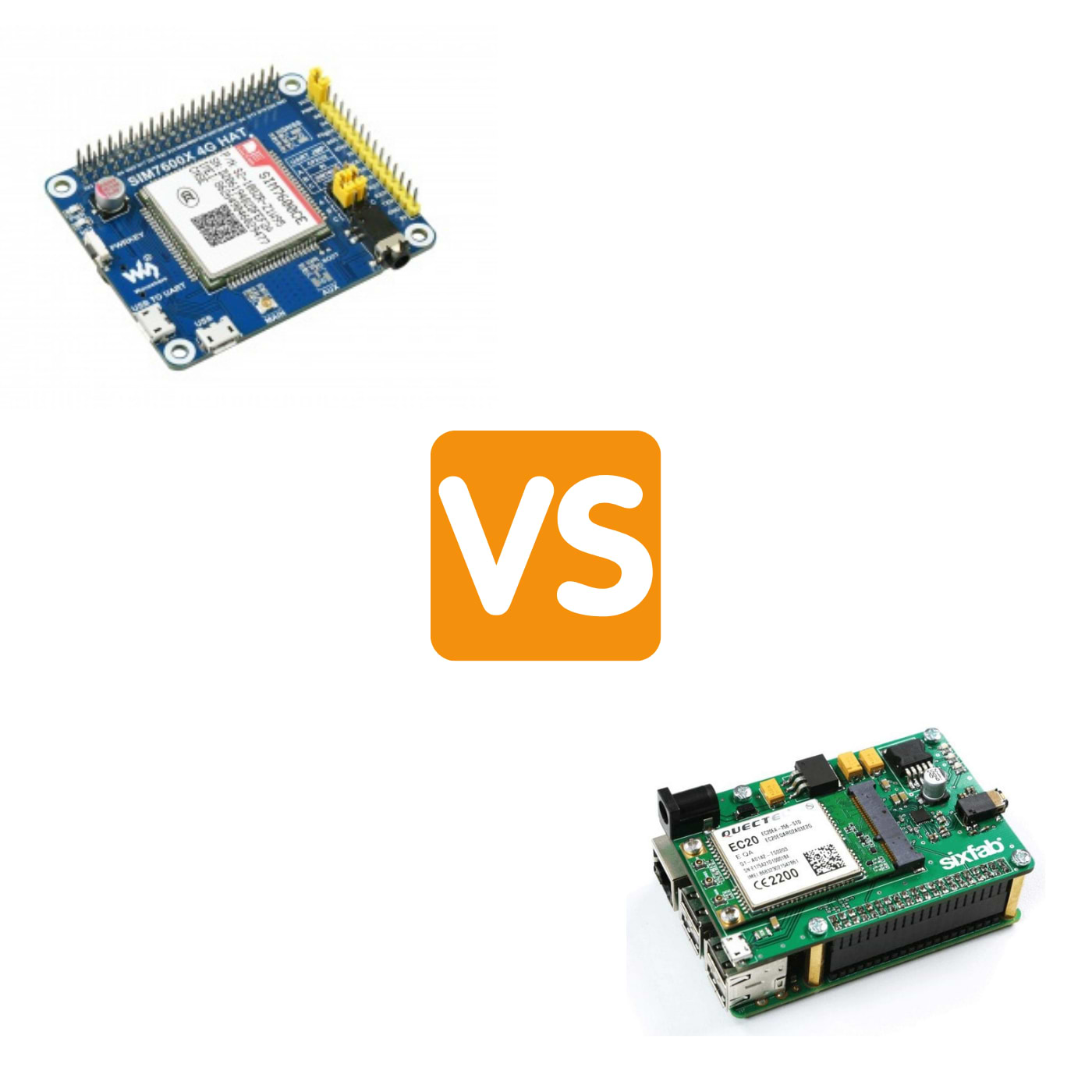What’s the Best Raspberry Pi 4G Modem? Here’s a Comparison
Usually, when devs are at home, they might connect a Raspberry Pi on WiFi. But, what if they’re in the field and need to collect more data from transmitting to home? A slow hotspot isn’t going to cover it. They’re going to need something more robust with their IoT projects than a mere dongle with a shoddy internet connection: they’ll need a cellular HAT (Hardware attached on top).
Keep reading and explore whether developers can use Raspberry Pi 4G modems to put out more speed we need while they’re out and about. Also, stay tuned to learn how to shop for a HAT in addition to a comparison of a couple of popular models on the market.
Does Raspberry Pi Work With 4G Modems?
As with dongles, the Raspberry Pi indeed works with 4G LTE modems. There are hundreds of Raspberry Pi 3G modems, 4G, and other variations (CAT 1–4) in the market to fit the needs of developers doing field research, streaming videos, or even making calls. As mentioned, these modems potentially offer a lot higher speeds than their dongle counterparts.
The Raspberry Pi Modems are HATs, attachments that add additional capabilities to the device. Since HATs perform better than dongles, they aren’t plug-and-play, meaning a newbie would have to put in a little more work to get these working.
Something that every developer will need to keep in mind is that there’s no way for a USB modem to appear as an Ethernet interface, it will always appear as a USB device.
Here’s How to Shop for a 4G Modem
One of the most significant factors to keep in mind is the operating system the Raspberry Pi’s running. For example, some modems 4G modems might only work on Windows or require special drivers to run. Conversely, most will work fine on Linux-based operating systems.
Also, ensure that the module supports the correct country. For instance, some models only support CAT4 networks in (X) countries, while others could support only CAT1.
When searching, keep in mind that there are many HATS; so, make sure that it’s a modem. HATs come in different shapes and sizes. For example, some HATs serve as humidity, temperature, and sensor pressures.
Not all Raspberry Pi HATs are made the same. Some might support 3- and 4G networks and not include GPS support. Shop based on what the IoT project needs.
Best Raspberry Pi 4G Modems: Which One is the Best?
Whether it’s working on an in-the-field IoT project or streaming a documentary while at the beach, developers are going to need a HAT to serve their needs. To ease the burden of shopping, here are a couple of Raspberry Pi 4G modems that’ll improve most project’s workflow efficiency.
Before reading on, a point to keep in mind is that none of these modems (or dongle) include SIM cards and support CAT4 networks.

Waveshare SIM7600CE-T 4G HAT for Raspberry Pi
Waveshare offers an affordable 4G HAT with its SIM7600CE-T that can also double as a communications device due to a couple of included accessories.
Their SIM7600CE-T model is ideal for Southeastern countries and China; however, they offer various HATs and LTE CAT (1 and 4) network support for various regions. So, be sure to check their handy chart of available models before purchasing.
For projects requiring SMS, the SIM7600CE-T supports mobile terminated (MT), mobile organized (MO), Protocol Data Unit (PDU), and Text types.
In the package, buyers will receive a pack of screws, two USB 2.0 to micro cables, a GPS antenna, an LTE antenna, and the HAT.
Here are some points that put the Waveshare SIM7600CE-T above its competition:
- Website provides thorough documentation on how to test their product
- Has an onboard audio decoder and jack: useful for making calls.
- Supports up to 150Mbps download speeds
- Noise reduction and echo cancellation features.
- Supports BeiDou, GPS, Global Navigation Satellite System (GLONASS), and location-based service (LBS)
Some areas where the SIM7600CE-T 4G HAT doesn’t shine:
- Buyers need to shop around for a SIM card, as their website doesn’t offer any.
- Their website doesn’t specify what carriers the HAT supports; therefore, requiring additional research before purchasing.
- The GPS antenna is clunky.
Sixfab Raspberry Pi 4G/LTE Cellular Modem Kit
The newbie-friendly Cellular Modem Kit provided by Sixfab comes with two LTE antennas, a Micro USB 2.0 cable, the 3G/4G/LTE HAT, in addition to the needed module (based on the buyer’s country.)
Speaking of modules, their Sixfab lists all their supported certifications, carriers, supported regions (including global), and GSM frequency bands.
Reviewers claimed that they achieved 30Mbps upload and download speeds while using this kit.
An additional investment of uninterruptible power supply (UPS) will ensure developers that they aren’t interrupted in the middle of tasks by managing the various mediums powering the Raspberry Pi.
Here are reasons why the Raspberry Pi Modem Kit is ideal:
- Sixfab offers an affordable pay-as-you-go SIM card that’s compatible with a myriad of networks around the world.
- It’s equipped with separate GNSS and PCB antennas that provide more flexibility with wire management.
- Their product description lists all the major cellular carriers their product supports, which is a lot.
- Built-in GPS, Global Navigation Satellite System (GNSS), and GLONASS receivers.
- Developers can disable portions of the board for cases that don’t call for much power.
Here are a few reasons why this kit might not serve as a developer’s best choice:
- Buyers will have to purchase screws and standoffs: this kit doesn’t come with any.
- It doesn’t support massive USA carriers like Verizon.
- Raspberry Pi Zero’s performance might fall short when using this HAT.
The Verdict: Best 4G Modem for Raspberry Pi
Due to its friendliness to beginners and experts, the Sixfab Raspberry Pi 4G/LTE Cellular Modem Kit reigns supreme in this competition. The kit easier to jump into, offers more flexibility with its multiple antennas, and fits into various IoT projects.
While it requires additional investments to work optimally, it’s worth it in the end with the top-notch quality developers will get from using a kit over Waveshare’s standalone HAT.



